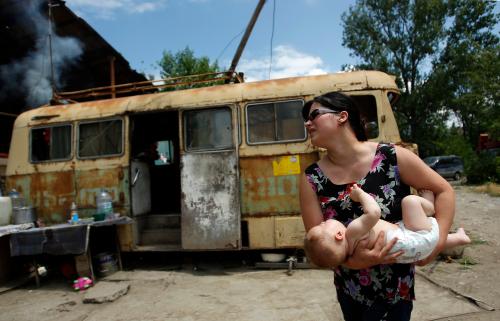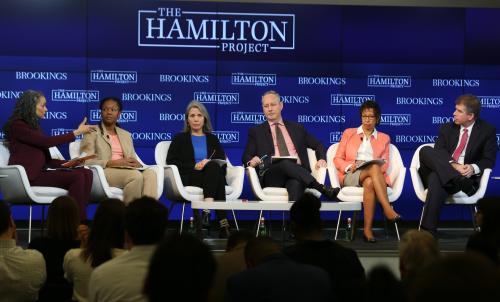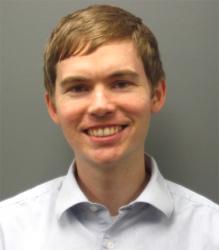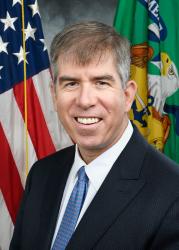This op-ed originally appeared in Real Clear Markets.
Where people live in the United States is often a key determinant of their economic outcomes. This is evident when you consider the disparities that exist between counties. In our research, we found that compared to the lowest-performing U.S. counties, in the highest-performing counties:
- Workers between the ages of 25 and 54 are 16 percentage points more likely to be employed;
- Life expectancy is a full six years longer; and
- The poverty rate is nearly three times lower.
In an effort to identify and learn from critical constraints on the success of places and the failings of public policy, a new Hamilton Project book, Place-Based Policies for Shared Economic Growth, examines the geography of prosperity and offers new approaches for supporting disadvantaged places
With our colleague Jana Parsons we found large, persistent gaps between places and little or no convergence over time: counties that struggled in 1980 generally continue to struggle today, and most thriving counties in 1980 still do well today.
This broad pattern of persistent gaps contrasts sharply with that of earlier periods in U.S. history, when struggling places tended to grow faster, which allowed these places to narrow income gaps with the rest of the country. Although there was still considerable regional inequality during this period, as the economy grew, that growth was shared. Unfortunately, this convergence between poor and rich places has largely stopped since about 1980, and some thriving regions like the Northeast have even increased their lead.
What accounts for these differences across places? We find that educational attainment is a core determinant of economic vitality at the local level, as places with low high school and college completion rates tend to struggle. In addition, rural communities have lower-performing economies, with the notable exception of areas that benefit from oil and gas extraction. Finally, places in 1980 with employment highly concentrated in one industry have on average struggled in the ensuing decades, likely due to an inability to weather shocks to that one industry.
Compounding and contributing to these geographic disparities are a series of long-standing and often-deliberate public policies aimed at the racial exclusion of and under-investment in predominantly black communities. Notably, the areas of disadvantage are largely the same areas where black families are more likely to live, whether in the South or elsewhere.
Deliberate actions—such as the federal government’s discouragement of mortgage lending in African-American neighborhoods and violence against black communities—are part of the story of geographic disparities in the United States, as explained by economists Bradley Hardy, Trevon Logan, and John Parman. In addition, black Americans and their neighborhoods have experienced unequal treatment within the U.S. safety net, poorly funded public schools, and disproportionately high incarceration rates, all of which have contributed to geographic disparities.
To date, the track record for place-based policies reversing regional inequalities has been largely disappointing. Residents of struggling areas face a constellation of challenges that are mutually reinforcing, from limited investment in public goods to weak labor markets and entrepreneurial ecosystems.
However, the startling size of gaps between places, the lack of regional convergence, the legacy of prior policies that created some of the inequalities we see today, and the decline in mobility have led us to reassess the need and potential for place-based policies. Accordingly, Place-Based Policies for Shared Economic Growth includes four evidence-based policy proposals that rely on decades of experience of what has and has not worked:
- David Neumark’s (University of California, Irvine) proposal would implement job subsidies in extremely poor areas, defined as those where 40 percent or more of individuals are below the poverty line. In the United States as a whole, 6.2 million people live in the more than 4,000 extremely poor areas. Neumark’s plan provides 18 months of fully subsidized nonprofit employment to low-income individuals who live in these areas. These jobs would be required to help revitalize and improve the targeted neighborhood; this could entail improvement of schools, parks, or other public infrastructure, removal of blighted buildings, or working in community health centers. Under this proposal, participants would then have access to 18 months of partially subsidized for-profit employment. The plan would seek to improve poor areas as well as give crucial employment experience to poor people in high-poverty neighborhoods.
- Tracy Gordon (Urban Institute) demonstrates that federal grants to state and local governments—amounting to roughly $700 billion annually—are often poorly targeted to states with relatively high fiscal needs; moreover, these grants do not respond as effectively to recessions as they could. By addressing inequities in fiscal resources across states, Gordon’s proposal would facilitate state and local investments that can help struggling places to catch up with the rest of the country. Gordon proposes to modify the formulas for Medicaid and other programs so as to help lagging states, make countercyclical enhancements to the Medicaid program permanent, and create a new rainy-day fund that states could draw on during downturns.
- E. Jason Baron (Florida State University), Shawn Kantor (Florida State University), and Alex Whalley (University of Calgary) observe that economic activity has become increasingly clustered, and that postsecondary institutions are increasingly considered to be a key part of this development. They point to evidence showing that communities can benefit from universities when research and industry are aligned. They propose that lagging communities partner with existing research universities to transfer productivity-enhancing knowledge to the communities’ local employers. Specifically, this would entail a regionally targeted expansion of the Manufacturing Extension Partnership (MEP) program that would encompass a broader range of sectors. A competitive grant process would support the establishment of new MEP branch offices in struggling areas, as well as MEP activities within research universities.
- Stephen Smith (The George Washington University) draws insights from development economics on a wide range of topics relevant to the problems of struggling places in the United States. He draws attention to the cognitive burden of poverty, the importance of maximizing participation in both education and the social safety net, and the value of incorporating institutional analysis into policy frameworks. Smith then develops several proposals, including policies that would raise high school completion rates; policies that would raise family take-up of existing health-care and nutrition-assistance programs; further research on the effects of infrastructure development and maintenance; and expanded U.S. data collection that would refine place-based policies.
There are stark and persistent gaps across U.S. counties, and these gaps are not closing on their own. In addition, mobility across regions has been declining, and is low in particular for people in struggling places. In response, there remains a need to highlight, and ultimately implement, more effective place-based policies to help Americans residing in struggling regions.
The Brookings Institution is committed to quality, independence, and impact.
We are supported by a diverse array of funders. In line with our values and policies, each Brookings publication represents the sole views of its author(s).









Commentary
Place-based policies for shared economic growth
October 19, 2018